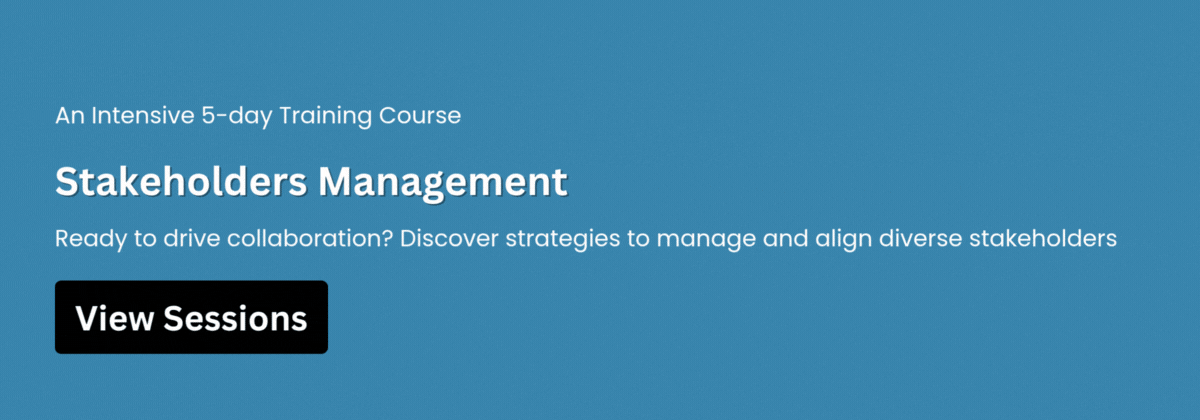Who Are Stakeholders in Stakeholder Theory
Who are stakeholders in stakeholder theory? In simple terms, stakeholders are all individuals and groups who are affected by a company’s operations or who can influence its decisions and outcomes. Stakeholder theory, introduced by Edward Freeman, expands the traditional view of business success beyond shareholders to include a wider network of relationships that shape organizational performance and sustainability.
This concept recognizes that businesses do not operate in isolation—every strategic decision impacts employees, customers, suppliers, investors, communities, and regulators. By understanding the diverse roles and interests of these groups, organizations can make more ethical, transparent, and sustainable decisions. Throughout this article, we will explore the different types of stakeholders, discuss primary and secondary stakeholders examples, and examine key stakeholder identification models that help businesses manage these relationships effectively.
At the heart of the stakeholder theory principle of stakeholder cooperation is the idea that long-term success depends on collaboration rather than competition. When companies engage with their stakeholders ethically and constructively, they create shared value, strengthen trust, and ensure business resilience. Ultimately, stakeholder theory promotes value creation through cooperation, responsibility, and mutual respect across all levels of corporate interaction.
Understanding Stakeholders in Stakeholder Theory
In the context of modern business ethics and governance, stakeholders in stakeholder theory refer to all parties who influence or are influenced by an organization’s objectives, operations, or performance. This inclusive approach recognizes that a company’s success relies not only on investors but also on the broader network of individuals and groups connected to its activities.
According to Edward Freeman’s definition, stakeholders are “any group or individual who can affect or is affected by the achievement of an organization’s objectives.” This means that every entity involved in or impacted by corporate decisions—from employees and customers to communities and regulators—has a stake in how the organization performs and behaves.
Stakeholder theory further distinguishes between internal stakeholders (those within the organization, such as employees and management) and external stakeholders (those outside it, such as customers, governments, suppliers, and the public). Understanding both relationships is essential for effective governance and ethical business management.
Main stakeholder categories include:
- Employees and Management: Drive internal performance and innovation.
- Customers and Clients: Influence reputation, demand, and market growth.
- Suppliers and Partners: Support operational continuity and quality.
- Shareholders and Investors: Provide financial resources and expect returns.
- Communities and Governments: Shape the social and regulatory environment.
By recognizing the interdependence of these groups, stakeholder theory encourages organizations to pursue ethical cooperation, shared value, and sustainable growth.
Types of Stakeholders: Primary and Secondary
Stakeholder theory categorizes individuals and groups based on how directly they influence or are influenced by a company’s actions. Understanding these distinctions helps organizations develop strategies that align business objectives with stakeholder needs and expectations. The two main categories are primary stakeholders and secondary stakeholders, each playing a distinct role in shaping corporate performance and reputation. Check: Stakeholders Management Training Course
Primary Stakeholders
Primary stakeholders are directly involved in an organization’s operations, decision-making, and long-term success. They include those who have a formal, financial, or operational relationship with the company—people and entities whose support is vital for business survival. Typical examples include employees, investors, customers, suppliers, and business partners.
Primary stakeholders examples:
- Employees: At Apple, employee innovation drives product development and organizational growth.
- Investors: At Shell, investors influence sustainability strategies and financial decision-making through shareholder engagement.
- Customers: Unilever’s customers directly impact product demand, brand perception, and ethical supply chain expectations.
- Suppliers and Partners: Companies like Toyota rely on their supply chain networks for efficiency and production continuity.
These groups hold a company’s core relationships—they are integral to daily operations and have the most immediate influence on business outcomes.
Secondary Stakeholders
Secondary stakeholders are not directly involved in a company’s operations but are indirectly affected by or can influence its decisions and public image. They often represent social, environmental, or regulatory interests and help hold businesses accountable to broader ethical and societal standards.
Secondary stakeholders examples:
- Media: Outlets such as Reuters or Bloomberg influence public perception through their coverage of corporate practices.
- Non-Governmental Organizations (NGOs): Groups like Greenpeace or Oxfam pressure companies to adopt responsible environmental and social practices.
- Local Communities: Residents near Shell’s energy operations or Unilever’s manufacturing sites are affected by corporate environmental and employment policies.
- Regulatory Bodies: Government agencies and policymakers shape compliance standards and business conduct expectations.
By analyzing primary and secondary stakeholders examples, companies gain a holistic understanding of their impact ecosystem. Effective engagement with both groups allows organizations to balance profit with purpose—fostering trust, reducing risks, and ensuring sustainable business growth aligned with ethical governance.
Stakeholder Identification and Salience Model
The stakeholder identification and salience model, developed by Mitchell, Agle, and Wood (1997), provides a structured framework for prioritizing stakeholder relationships based on three key attributes: power, legitimacy, and urgency. This model helps organizations identify which stakeholders deserve the most attention and resources at any given time, ensuring that decision-making processes are both ethical and strategically aligned.
Stakeholder theory emphasizes that not all stakeholders have equal influence or importance. The Stakeholder Salience Model helps companies determine how to allocate engagement efforts by analyzing these three attributes:
- Power: The stakeholder’s ability to influence the organization’s actions, decisions, or outcomes. For example, major investors or regulatory bodies often hold significant power due to their capacity to affect strategic direction or compliance standards.
- Legitimacy: The degree to which a stakeholder’s involvement is seen as appropriate or justified within societal, legal, or moral frameworks. Employees, customers, and local communities often hold legitimacy because they are directly impacted by company policies and practices.
- Urgency: The immediacy or critical nature of a stakeholder’s claim. Issues like labor disputes, environmental hazards, or consumer data breaches often create urgent stakeholder demands that require prompt attention from management.
Mitchell, Agle, and Wood classified stakeholders into different categories (dormant, discretionary, demanding, dominant, dangerous, dependent, and definitive) based on how many of these attributes they possess. The more attributes a stakeholder exhibits, the higher their salience—meaning the organization must prioritize engagement with them.
By applying the stakeholder identification and salience model, companies can strategically manage competing interests, focus on the most critical relationships, and ensure that stakeholder engagement is proactive, equitable, and aligned with ethical governance principles. Check: Managing Project Stakeholders Course
The Principle of Stakeholder Cooperation
The stakeholder theory principle of stakeholder cooperation, introduced by Edward Freeman, emphasizes that sustainable and ethical organizations thrive through collaboration rather than competition among their stakeholders. Freeman argued that long-term success depends on fostering relationships built on mutual respect, trust, and shared objectives, where each stakeholder contributes to and benefits from the organization’s overall purpose.
This principle highlights that businesses function as interconnected systems in which employees, customers, investors, suppliers, and communities all play a vital role. Sustainable organizations, therefore, focus on open dialogue, transparency, and mutual understanding to align diverse interests and create shared value. Cooperation transforms stakeholder relationships from transactional to strategic partnerships—strengthening both organizational performance and societal impact.
Key aspects of the stakeholder theory principle of stakeholder cooperation include:
- Promoting active communication and feedback between management and stakeholders.
- Building long-term partnerships based on fairness, trust, and shared accountability.
- Ensuring that stakeholder engagement contributes to both ethical outcomes and business objectives.
- Recognizing interdependence among economic, social, and environmental factors.
Examples of cooperative stakeholder initiatives include:
- Sustainability Partnerships: Companies like Unilever and Nestlé collaborate with NGOs and local communities to promote environmental stewardship and fair sourcing.
- Supply Chain Ethics Programs: Nike and Patagonia engage with suppliers to improve labor practices, transparency, and environmental performance.
- Multi-Stakeholder Sustainability Platforms: Organizations such as the World Economic Forum facilitate dialogue between corporations, governments, and civil society to address global challenges like climate change and social equity. Check: Managing Project Stakeholder Relationships Training
By embracing the stakeholder theory principle of stakeholder cooperation, organizations move beyond short-term profit motives toward long-term resilience and credibility. Cooperation fosters innovation, strengthens relationships, and builds a foundation of ethical governance that benefits both the organization and society at large.
Stakeholder Management in Stakeholder Theory
What Is Stakeholder Management in Stakeholder Theory?
Stakeholder management is the strategic process of identifying, analyzing, and engaging with stakeholders to create mutual value and achieve organizational goals. In simple terms, it involves understanding who the stakeholders are, what they care about, and how their interests align with the company’s objectives. Within the broader framework of stakeholder theory, this practice ensures that organizations balance competing interests responsibly and ethically, fostering long-term trust and collaboration.
The answer to what is stakeholder management in stakeholder theory lies in Freeman’s central idea — that businesses succeed when they manage relationships with all key stakeholders through open dialogue, shared purpose, and ethical engagement. Effective stakeholder management transforms governance from a compliance-based activity into a proactive approach that drives sustainability, accountability, and social responsibility. Explore: Project Management Training Courses
Key Steps in Stakeholder Management
- Identifying and Prioritizing Stakeholders
Organizations must first determine who their stakeholders are — both internal (employees, managers, shareholders) and external (customers, suppliers, communities, regulators). Prioritization helps focus on those with the greatest influence or those most affected by the company’s actions. - Understanding Interests and Influence
Once identified, companies should analyze each stakeholder group’s motivations, expectations, and level of influence. This understanding allows organizations to anticipate concerns, align objectives, and mitigate potential conflicts. - Developing Engagement Strategies
Stakeholder engagement requires structured communication and collaboration plans. These may include regular meetings, feedback surveys, public disclosures, and partnerships that ensure transparency and trust. Effective engagement transforms stakeholders from observers into active contributors to corporate success. - Monitoring and Reviewing Relationships
Stakeholder relationships must be continuously evaluated to ensure mutual value creation. Regular reviews, reporting mechanisms, and feedback loops help organizations adapt strategies, strengthen relationships, and maintain accountability.
Aligning Stakeholder Management with Governance, CSR, and ESG
Strategic stakeholder management aligns closely with corporate governance, CSR (Corporate Social Responsibility), and ESG (Environmental, Social, and Governance) principles. It ensures that governance structures are transparent and inclusive, CSR initiatives address social and ethical obligations, and ESG goals are integrated into business performance metrics.
By adopting effective stakeholder management practices, organizations not only meet ethical and compliance standards but also enhance sustainability, innovation, and long-term value creation — hallmarks of responsible and modern corporate governance. Explore: Leadership Training Courses
Global Frameworks and Applications
In the era of globalized business, organizations increasingly rely on international standards to guide ethical governance and effective stakeholder engagement. These global frameworks provide structured approaches to identifying, prioritizing, and communicating with stakeholders in a consistent and transparent manner. By embedding stakeholder engagement into governance systems, they ensure that businesses operate with accountability, inclusivity, and long-term sustainability at their core.
OECD Corporate Governance Principles
The OECD Corporate Governance Principles highlight stakeholder engagement as a cornerstone of responsible business conduct. They emphasize that corporations should recognize the rights of stakeholders established by law or mutual agreements and encourage active cooperation between companies and their stakeholders. This cooperation contributes to the firm’s overall performance, accountability, and long-term success.
Key applications include:
- Promoting transparent communication and reporting.
- Protecting the rights of shareholders and other key stakeholders.
- Encouraging board-level oversight of stakeholder relationships.
ISO 37000 Governance of Organizations
The ISO 37000 Governance of Organizations standard provides universal guidance on effective, ethical, and purpose-driven governance. It explicitly integrates stakeholder identification, engagement, and responsiveness into the governance framework. This standard institutionalizes stakeholder management by encouraging organizations to embed communication, trust, and shared accountability in their governance systems.
Core elements include:
- Identifying stakeholders relevant to the organization’s purpose and objectives.
- Establishing communication channels for continuous dialogue.
- Aligning stakeholder interests with strategic decision-making and sustainability goals.
ICGN Global Governance Principles
The ICGN Global Governance Principles, issued by the International Corporate Governance Network, focus on aligning investor stewardship with responsible corporate behavior. These principles promote stakeholder inclusivity by encouraging companies to understand and respond to the expectations of all stakeholders, not just shareholders. They reinforce the idea that long-term value creation requires open, structured, and ethical engagement across all stakeholder groups. Explore: Governance & Compliance Training Courses
Notable features include:
- Encouraging transparency in stakeholder communication.
- Promoting board accountability for stakeholder relationships.
- Embedding sustainability and social responsibility into governance structures.
Collectively, frameworks such as OECD, ISO 37000, and ICGN institutionalize stakeholder identification and communication practices within corporate governance systems. They help organizations move beyond compliance toward genuine stakeholder collaboration—ensuring that engagement is strategic, ethical, and fundamental to sustainable business success.
Explore Courses From Our Top Categories:
➡️Business Training Courses – ➡️ Data Training Courses – ➡️ Technical Training Courses – ➡️ HSSE Training Courses
FAQs on Stakeholders in Stakeholder Theory
-
Who are stakeholders in stakeholder theory?
In stakeholder theory, stakeholders are any individuals or groups who can affect or are affected by an organization’s actions, decisions, or objectives. This includes employees, customers, investors, suppliers, communities, and regulators. The theory emphasizes that companies must consider all stakeholders—not just shareholders—to achieve long-term ethical and sustainable success.
-
What are examples of primary and secondary stakeholders?
Primary stakeholders are directly involved in a company’s operations, such as employees, investors, customers, and suppliers. Secondary stakeholders are indirectly affected, such as media outlets, NGOs, government agencies, and local communities. For example, at Unilever, employees and customers are primary stakeholders, while environmental NGOs and local residents near production sites are secondary stakeholders.
-
What is the stakeholder identification and salience model?
The stakeholder identification and salience model, developed by Mitchell, Agle, and Wood (1997), helps organizations determine which stakeholders deserve priority based on three attributes—power, legitimacy, and urgency. Stakeholders possessing all three are considered “definitive” and should receive the highest level of engagement and communication. (Visual tip for readers: include a stakeholder theory model diagram to illustrate this relationship.)
-
What is the principle of stakeholder cooperation in stakeholder theory?
The stakeholder theory principle of stakeholder cooperation, introduced by Edward Freeman, emphasizes collaboration, mutual respect, and shared value among all stakeholder groups. It encourages open communication and partnership to achieve ethical outcomes and sustainable growth. Examples include joint sustainability programs, fair trade sourcing, and community engagement initiatives.
-
How does stakeholder management work in stakeholder theory?
In stakeholder theory, stakeholder management is the strategic process of identifying, analyzing, and engaging stakeholders to build trust and create mutual value. This involves:
- Identifying key internal and external stakeholders.
- Understanding their interests and level of influence.
- Developing communication and engagement strategies.
- Monitoring and reviewing relationships continuously.
Effective stakeholder management aligns with governance, CSR, and ESG principles by fostering transparency and accountability.
-
What does a stakeholder theory model diagram represent?
A stakeholder theory model diagram visually represents the organization at the center surrounded by its stakeholders—illustrating interdependence and the flow of influence among them. It typically shows the relationships between internal and external stakeholders and highlights how power, legitimacy, and urgency define stakeholder importance.
-
Why is stakeholder cooperation essential in governance?
Stakeholder cooperation is essential in governance because it ensures transparency, inclusivity, and ethical accountability in decision-making. By fostering dialogue among investors, employees, customers, and communities, organizations can minimize conflicts, strengthen trust, and achieve long-term sustainability aligned with corporate governance principles.
-
How do companies identify and prioritize stakeholders effectively?
Companies identify and prioritize stakeholders by mapping all individuals or groups impacted by their operations and assessing them through the power-legitimacy-urgency framework. High-priority stakeholders—those with significant influence or urgent claims—receive greater attention and engagement. Tools like stakeholder matrices, surveys, and impact assessments help organizations structure this process and maintain balanced, cooperative relationships. Explore: Training Courses in Dubai






